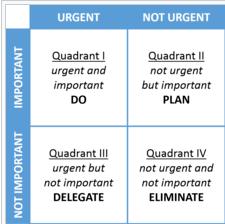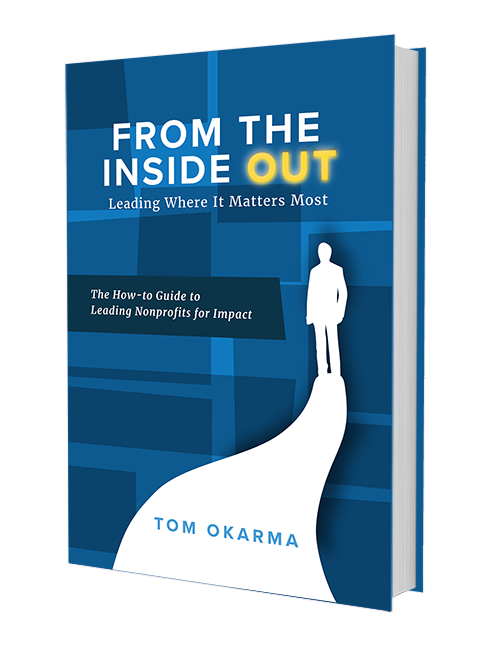Going through the motions of Leadership Development.
When I first became a CEO, my biggest surprise was the speed in which important issues came to me and had to be addressed. This sudden load of problems can be extremely daunting and overwhelming. It seemed that everything was both important and urgent. If you know anything about that famous 2×2 square developed by Stephen Covey, you know what I mean.
Covey created a 2×2 square with four quadrants:
Important and urgent
Important and not urgent
Not important and urgent
Not important and not urgent

His point was that we should be working on Important and Not Urgent items. These were your mission-critical issues that had to be handled correctly. If any slipped into the Important and Urgent quadrant, you were probably going to struggle because you were under a time constraint and probably didn’t have all the information necessary to make an informed decision.
Back then, everything seemed important and urgent to me. While I am sure I overreacted in my new position, it became clear that there was no way I could effectively handle everything others were sending my way for input or decision-making. I was constantly running out of time and energy. I felt myself lacking the stamina I was so accustomed to having. I saw that I was missing out on opportunities to coach and develop others–an important part of my job.
Eventually, I got through the important and urgent stuff. I learned that I was getting dragged into too many issues that others could have handled just fine without my involvement. I had to draw a line somewhere, so I developed a list of issues that only I could or should handle, and began delegating everything else to others. This was an important part of my leadership development. I identified nine areas I “owned” and could not delegate to others. These were my primary responsibilities. Here are three of them:
- Protect the vision and mission. No one else had the overall perspective on our organization’s activities like I did, so it was up to me to ensure everything we did was in alignment with our purpose. Budgets, hiring practices, marketing, goals, everything had to be in tight alignment. I used our vision and mission statements as a guide to create our strategic plan. If we struggled with our alignment, the plan was not ready to be implemented. Once we had tight alignment between our vision, mission statements and strategic plan, I used them as decision-making tools when we had questions or when other opportunities surfaced. I took this very seriously and spent a lot of time ensuring we were staying, “in our lane.”
- Enforcing our values. Values describe the ground rules for how we intend to conduct ourselves: they describe expected behavior among staff, volunteers, and outsiders. If I found that one of our values was being neglected or otherwise not being followed, it was my job to find out what happened and press the reset button. Values that are not followed, not re-enforced, or not rewarded simply become a wish list. And once an organization ignores its values, anything goes.
- Communicate, Communicate, Communicate. I learned that a consistent and frequent message was the only way to get important points across. For top issues, I took on the role of chief communication person. I worked to deliver the same message on a topic each time I addressed it. This included using the same words and framework.
Sometimes important messages need to be repeated to get the point across.
I repeated messages to the entire organization, to each department and to individual members as needed. I got out of my office frequently and walked around to assess how others were doing in understanding my points. The only way I could measure how effectively I was communicating was to share my messages multiple times and then check on how well it was being absorbed and understood. Understand that Leadership development requires constant maintenance and improvement.
These were just three of my key responsibilities. As a CEO, the list went on and on. The moral of the story here is to take things one step at a time. Focus on what is Important and Not Urgent. Don’t let tasks slip through the cracks and fall into that “urgent” category. Life is much simpler when you stay calm, organized, and collected.
Ready to Lead Your Nonprofit Better?
From the Inside Out can you help you create a bigger impact with your agency. Discover how to lead yourself, your team, and your board. Put it all together and learn how to successfully lead positive change. Download Chapter 1 free!


